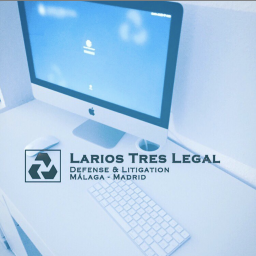
LARIOS TRES LEGAL
Robots Law (I)
Since ancient times, automatons have fascinated humanity, marking the beginning of a journey that led to the development of robots and artificial intelligence (AI) systems.
The evolution of the concept of a robot, which includes virtual robots, nanobots, softbots, androids, humanoids, cyborgs, and drones, has been driven by significant technological advancements.
The Royal Spanish Academy (RAE) defines a robot as a “programmable electronic machine or device capable of manipulating objects and performing various operations,” highlighting its ability to alter its environment.
The development of the Internet and the widespread use of personal computers have had a decisive impact on the advancement of AI.
While AI refers to the software executing tasks, robotics generally refers to the hardware acting according to the software’s instructions, and these disciplines are increasingly converging.
European Regulation
- European Parliament Resolution of 2017
The EU has taken significant steps to establish a regulatory framework for robotics and AI:
- European Agency for Robotics and Artificial Intelligence: To oversee and coordinate the regulation and development of these technologies.
- Voluntary Ethical Conduct Code: Ensuring robots act according to legal and ethical standards.
- Liability Rules: Establishing rules for liability for damages caused by robots, considering a legal status of electronic persons.
- European Register of Intelligent Robots: Cataloging and monitoring intelligent robots in the EU.
- Safety and Privacy: Integrating these values into the design of robots.
- Robolaw Project
Initiated in 2014, it investigated and developed a report to guide robotics legislation, considering the possibility of granting legal personality to robots to make them accountable or appear in court for their unpredictable behaviors.
- Digital Services Act and Digital Markets Act
While not specifically aimed at robotics, these laws establish a broader regulatory framework for the digital environment, affecting developments in robotics and AI by ensuring transparency, accountability, and fairness in the digital market.
Regulation in Spain
It’s worth mentioning that, in Spain, the specific legislation on robotics and AI is limited.
Currently, in July 2020, the creation of the Advisory Council on Artificial Intelligence was announced to ensure the ethical and safe use of AI, contributing to the National Strategy on Artificial Intelligence (NSAI).
The six strategic axes of NSAI are:
- Innovation in AI.
- Development of adequate infrastructures.
- Promotion and support of national talent.
- Full integration of AI into the industrial value chain.
- Use in Public Administration.
- Promotion of an ethical framework.
Civil Liability of Robots
- Liability for Actions or Omissions
Returning to European regulation in robot law, the Directive 85/374/EEC regulates liability for damage caused by defective products, where the manufacturer is responsible if the injured party can demonstrate actual damage, the defect, and the causal relationship between them.
However, this 1985 regulation might be outdated given the current scenario where robots’ autonomous learning and independent decision-making capabilities have significantly increased.
The European Parliament’s 2017 resolution proposes creating a specific legal personality for complex autonomous robots, allowing them to be considered electronic persons responsible for the damages they may cause. (Something we’ll see for the next occasion)
How do you think the figure of the “electronic person” would work?
Extracontractual Civil Liability Robot
Related to the private law, the civil liability for damages caused directly or indirectly by robots is a crucial aspect.
According to the Roman system of extracontractual civil liability, reflected in Art. 1902 of the spanish Civil Code, “whoever by action or omission causes damage to another, involving fault or negligence, is obliged to repair the damage caused.”
However, attributing fault or negligence to a robot poses a dilemma since they are objects and, thus, not imputable.
In this sense, some authors propose applying the civil liability of animals to robots, considering that both entail a risk that must be assumed by their possessor.
This interpretation is based on Art. 1905 of the spanish Civil Code, which holds the possessor of an animal responsible for the damages it causes, even if it escapes or gets lost.
Challenges and Future Regulation AArtificial Intelligence
The growing autonomy of robots makes attributing responsibilities difficult. Human-robot interaction and cybersecurity are key challenges.
For that reason, the regulation must adapt to technological advancements to ensure the safe and ethical development of robotics and AI, benefiting society responsibly and equitably.
Conclusion
To sum up, the regulation of robotics and AI in the EU is constantly evolving to adapt to rapid technological advances.
Initiatives such as the European Parliament’s 2017 resolution and the Robolaw project represent significant steps towards a legal framework that ensures the safe and ethical development of these technologies.
However, continuous efforts are needed to address emerging challenges and ensure that robotics and AI benefit society in a responsible and equitable manner.
AutorSusana Domínguez Romero Jurist - Legal Advisor
Contact information+ 34 697 302 341
susana.dominguez@lariostreslegal.com
Services
Real Estate
Quantity claims
Civil Responsibility
Corporate
Accounting













